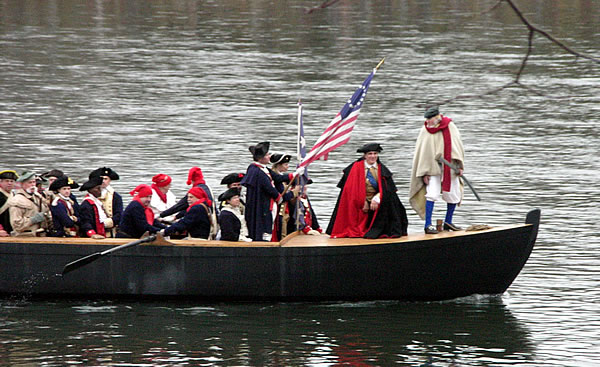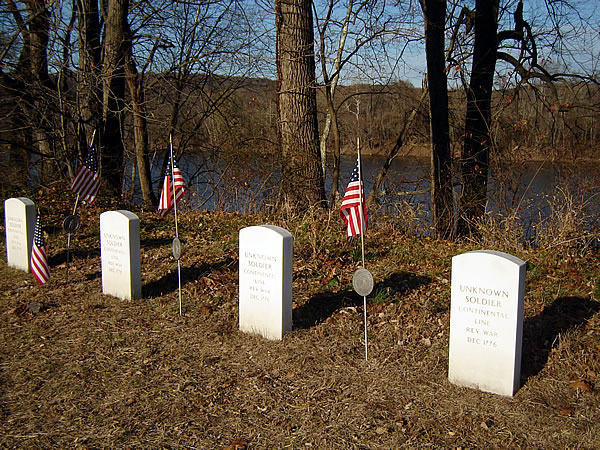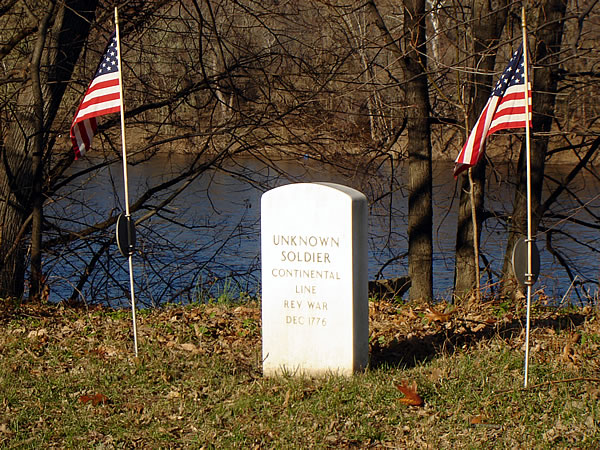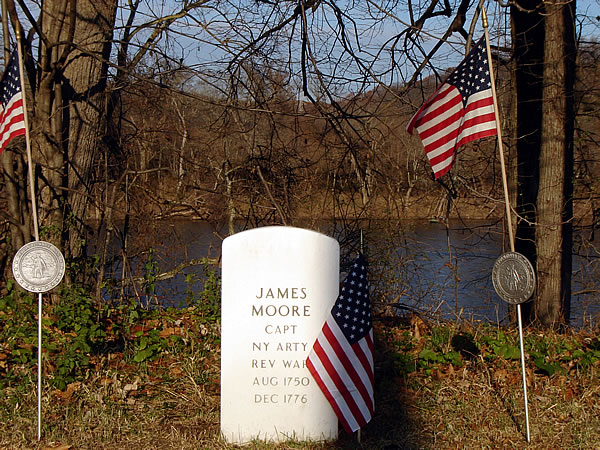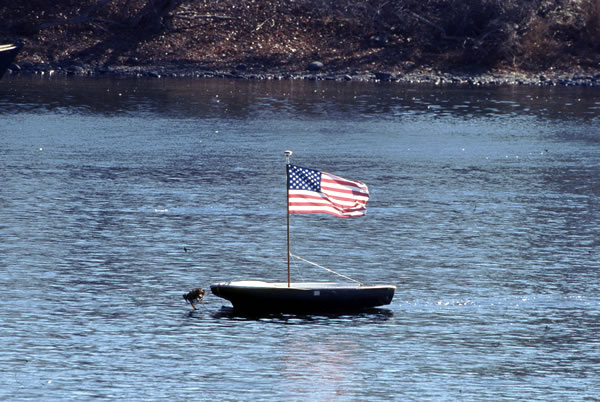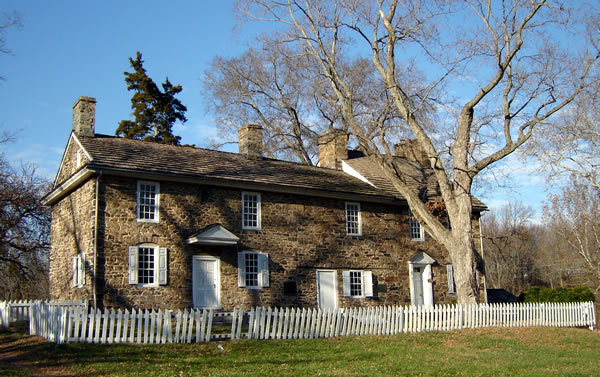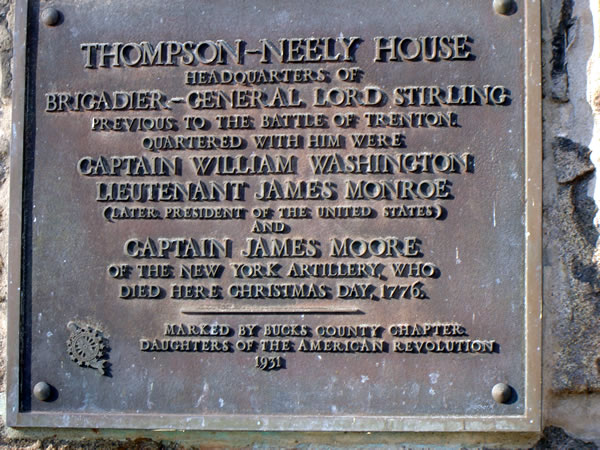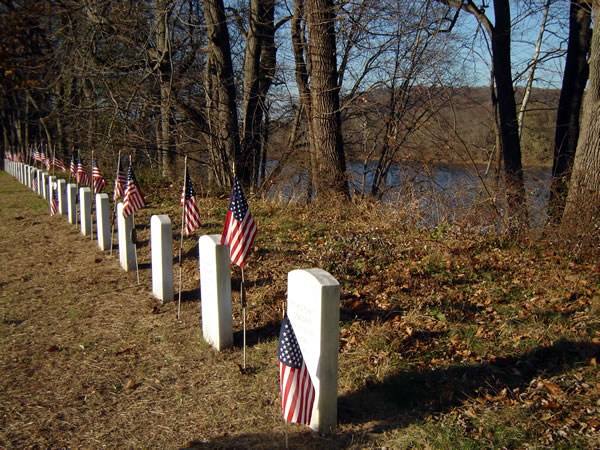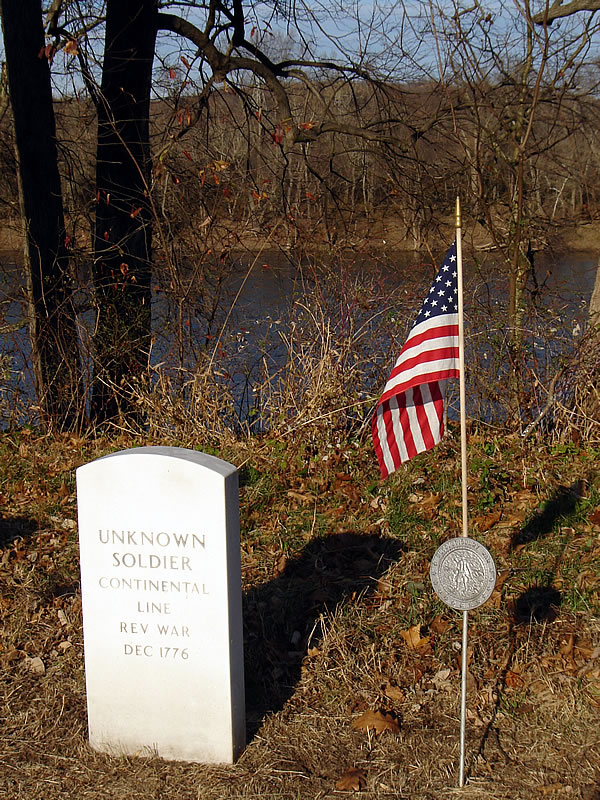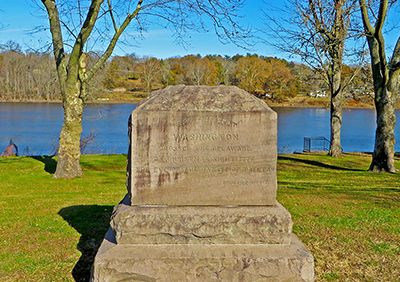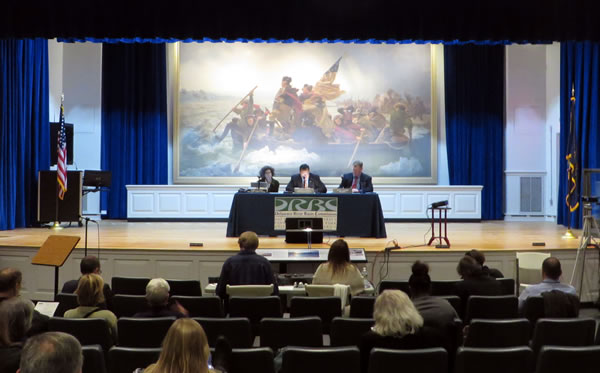Delaware • New Jersey • Pennsylvania
New York • United States of America
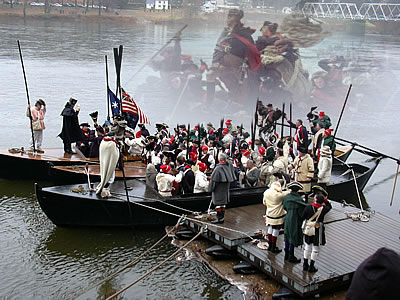 |
| Photo of Reenactment with added effect of Leutze's "George Washington Crossing the Delaware" painting. |
George Washington and his Continental Army of 2,400 heroes crossed the Delaware River’s ice-choked waters on Christmas night, 1776, ambushing roughly 1,400 Hessian troops in and around Trenton, N.J.Washington's troops faced a howling nor’easter with freezing rain, snow, strong winds and temperatures ranging from 29 to 33 degrees.
Also present at the crossing was another future president, James Monroe. It was a turning point in the Revolutionary War.
Washington Crossing Reenactments
The spot where General Washington led his army across the Delaware River in pursuit of freedom is commemorated every Christmas Day during a mid-day reenactment.
• Learn more about the annual Washington Crossing Reenactment
Washington Crossing Historic Park Visitor's Center
At the visitor’s center on the Pa. side of the river, you can view a replica of the famous 1851 painting by German artist Emanuel Leutze, Washington Crossing the Delaware. Although not entirely accurate in its depiction (for example, the ice more closely resembles what one would observe on the Rhine River in Germany, not the Delaware), it remains one of our nation’s most recognized paintings.
• View Info about the Visitor's Center
The original, which is on display at The Metropolitan Museum of Art in New York City, was described by one newspaper in 1851 as "the grandest, most majestic, and most effective painting ever exhibited in America."
Washington Crossing Historic Park Memorial Cemetery
A 3.5-mile drive north of the crossing site along Pa. Route 32 and then a short walk across the Delaware Canal will take you to a memorial cemetery overlooking the Delaware River. The simple plaque erected in 1929 reads, "In memory of many unknown soldiers of the Continental Army who died from sickness and exposure while encamped in these fields before the Battle of Trenton and buried at this spot Christmas Day 1776."
James Moore, a 24-year-old captain from Alexander Hamilton's New York company of artillery, is the only veteran buried here whose identity is known. These graves along the Delaware are thought to be the final resting place for some of America's first unknown soldiers.
The Crossing of the Delaware continues to inspire our nation. American patriotism was unfurled on the Delaware River shortly after the September 11, 2001, terrorist attacks against the United States when a small rowboat displaying our flag appeared one morning where the crossing took place so many years ago. It was also referenced in President Barack Obama's First Inaugural Address in 2009.
- Described by one soldier as "it blew a perfect hurricane," the weather in 1776 forced the cancellation of two other planned Delaware River crossings consisting of another 3,000 troops intended to support Washington's Continentals.
- 2,400 soldiers, horses, and 18 pieces of field artillery (each gun weighing as much as 2,000 pounds) crossed the Delaware River.
- Contrary to legend, the Hessian troops in Trenton were on high alert and not drunk or drinking; however, they were still caught by surprise by the Continental Army.
- Lt. James Monroe (who would become our fifth president in 1817) and Captain William Augustus Washington (a relative of our future first president) were wounded during the Battle of Trenton following the crossing. Both were taken to the Thompson-Neely House, which served as a field hospital, for their convalescence.
- Although no Americans were killed during the Christmas night crossing and the First Battle of Trenton, a number of Continental soldiers died from exposure, disease or previous injuries.
- Washington crossed the Delaware River from Pennsylvania into New Jersey twice during December 1776: December 25-26 and December 30. The weather conditions during the second crossing were worse than on Christmas night.
- The first reenactment of the historic crossing of the Delaware River occurred on Christmas Day 1953. It featured one small boat holding five or six men, including actor/producer St. John Terrell as George Washington. Mr. Terrell would portray General Washington during subsequent reenactments spanning a quarter of a century.
- Following Mr. Terrell's retirement, the role of George Washington for the next seven annual reenactments (1978-1984) was played by John B. Kelly, Jr., the brother of the Princess of Monaco, Grace Kelly. Mr. Kelly was an outstanding oarsman who competed in four Olympics (winning a bronze medal in 1956). At the time of his death in March 1985 at the age of 57, he was president of the United States Olympic Committee.
- The first time when the reenactors were unable to row across the Delaware River was Christmas Day 1980. With the four Durham boats frozen solidly in the ice on the Delaware and bitterly cold wind chills, the general and his troops made a symbolic crossing by walking across the Washington Crossing Bridge.
Washington Crossing Historic Park (PA)
Washington Crossing State Park (NJ)
DRBC & Our Shared Waters
- Flyer: Washington Crosses the Delaware (pdf; DRBC)
- When Washington Crossed the Delaware, a Diverse Regiment Led the Way. Who Were the 'Marbleheaders?' (Our Shared Waters blog authored by the Friends of Washington Crossing Park; December 2022)
- The Vital Role of the Delaware River in Food Production — Then and Now (Our Shared Waters blog authored by the Friends of Washington Crossing Park; October 2022)
Mount Vernon
Other
- Ten Crucial Days: December 25, 1776-January 3, 1777
- Ten Crucial Days Video by Kean University (YouTube)
- This Day in History: December 25 (The History Channel web site)
- The 10 Days That Changed The World, Washington's Crossing the Delaware Video (YouTube)
Copyright © Delaware River Basin Commission,
P.O. Box 7360, West Trenton, NJ 08628-0360
Phone (609)883-9500; Fax (609)883-9522
Thanks to NJ for hosting the DRBC website


